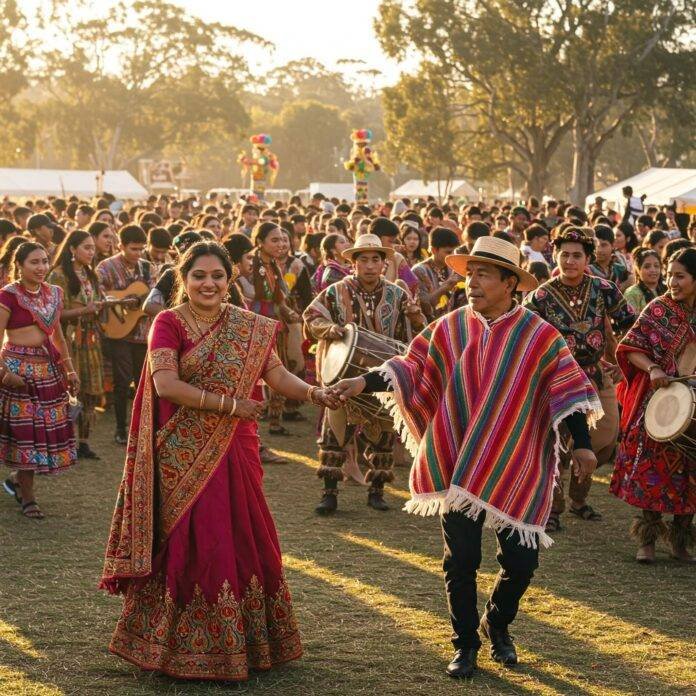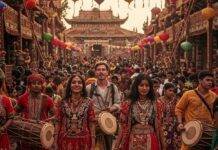Cultural activities play a pivotal role in preserving traditions, ensuring that the rich tapestry of our heritage remains vibrant for future generations. From lively festivals to intricate crafts, these activities are more than just entertainment—they’re a bridge connecting the past to the present. In this blog, we’ll explore why cultural activities are essential for safeguarding traditions, with real-world examples and actionable insights to inspire you to get involved.
Why the Importance of Cultural Activities Matters
The importance of cultural activities lies in their ability to keep traditions alive in a rapidly modernizing world. They serve as living expressions of cultural heritage, passing down values, stories, and practices through generations. According to UNESCO, intangible cultural heritage—like rituals, performing arts, and traditional knowledge—is at risk of disappearing without active preservation efforts. Cultural activities provide a dynamic way to protect these treasures.
Strengthening Cultural Identity Through Activities
Cultural activities reinforce a sense of belonging and pride in one’s heritage. Whether it’s a Native American powwow in the United States or the Diwali festival in India, these events unite communities around shared values and histories. For example, the annual Obon festival in Japan honors ancestors through dance and lanterns, keeping spiritual traditions alive while fostering community bonds.
- Actionable Takeaway: Attend or organize a local cultural event to deepen your connection to your heritage.

Preserving Traditions with Traditional Practices
Hands-on cultural activities, like pottery-making in Morocco or weaving in Guatemala, ensure that traditional crafts don’t fade away. These practices are often taught through workshops or family traditions, preserving skills that might otherwise be lost. For instance, the Indigenous Maori of New Zealand teach their youth traditional carving techniques, embedding cultural knowledge in the next generation.
- Benefits of Traditional Practices:
- Preserve unique artistic techniques.
- Provide economic opportunities through cultural tourism.
- Strengthen intergenerational bonds.
Outbound Link: Learn more about UNESCO’s efforts to protect intangible cultural heritage here.
How Cultural Activities Foster Heritage Preservation
The importance of cultural activities extends to their role in fostering community engagement and heritage preservation. By bringing people together, these events create shared experiences that strengthen social ties and cultural pride.
Celebrating Cultural Festivals to Preserve Traditions
Cultural festivals are a cornerstone of preserving traditions. Events like Mexico’s Día de los Muertos or China’s Lunar New Year blend ritual, food, and performance to celebrate heritage. These festivals aren’t just for locals—tourists often participate, spreading awareness of cultural traditions globally. Data from the World Tourism Organization shows that cultural tourism, driven by festivals, accounts for 40% of global tourism.
- Actionable Takeaway: Share photos or stories from a cultural festival on social media to raise awareness of its significance.

Encouraging Youth Participation
Engaging younger generations in cultural activities is critical for preserving traditions. Schools and community centers often host programs like storytelling sessions or traditional music classes to spark interest. In Ireland, the revival of Gaelic language and dance through youth programs has helped preserve Celtic traditions. Encouraging kids to participate ensures that cultural heritage remains relevant.
Outbound Link: Explore how the Smithsonian Institution promotes cultural preservation through education here.
Overcoming Challenges in Preserving Traditions
While cultural activities are vital, they face challenges like globalization and urbanization, which can erode traditional practices. The importance of cultural activities lies in their ability to counter these threats through active participation and adaptation.
Adapting Traditions for Modern Audiences
To stay relevant, some cultural activities evolve while retaining their core essence. For example, traditional Korean hanbok fashion has been modernized into everyday wear, making it appealing to younger audiences. By blending tradition with innovation, cultural activities remain accessible and engaging.
- Actionable Takeaway: Support local artisans by purchasing modernized traditional crafts, like clothing or jewelry.
Addressing Resource Constraints
Many communities lack the funding or infrastructure to host cultural activities. Governments and NGOs can help by investing in heritage preservation. For instance, India’s Ministry of Culture funds regional festivals to promote traditional arts, ensuring they thrive despite economic challenges.

How You Can Support Cultural Activities
The importance of cultural activities in preserving traditions depends on collective action. Here are practical ways to contribute:
- Participate Actively: Join local cultural events, from dance workshops to food festivals.
- Support Artisans: Buy handmade crafts to sustain traditional economies.
- Educate Others: Share knowledge about your culture through blogs, videos, or community talks.
- Advocate for Funding: Support policies that protect cultural heritage sites and events.
Outbound Link: Discover how the National Endowment for the Arts supports cultural preservation here.
Conclusion
The importance of cultural activities in preserving traditions cannot be overstated. They breathe life into our heritage, strengthen community bonds, and ensure that future generations inherit a vibrant cultural legacy. By participating in festivals, supporting artisans, and engaging youth, we can all play a role in safeguarding traditions. So, what’s one cultural activity you’ll explore or support this year? Share your thoughts in the comments!






































